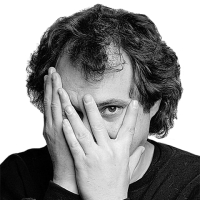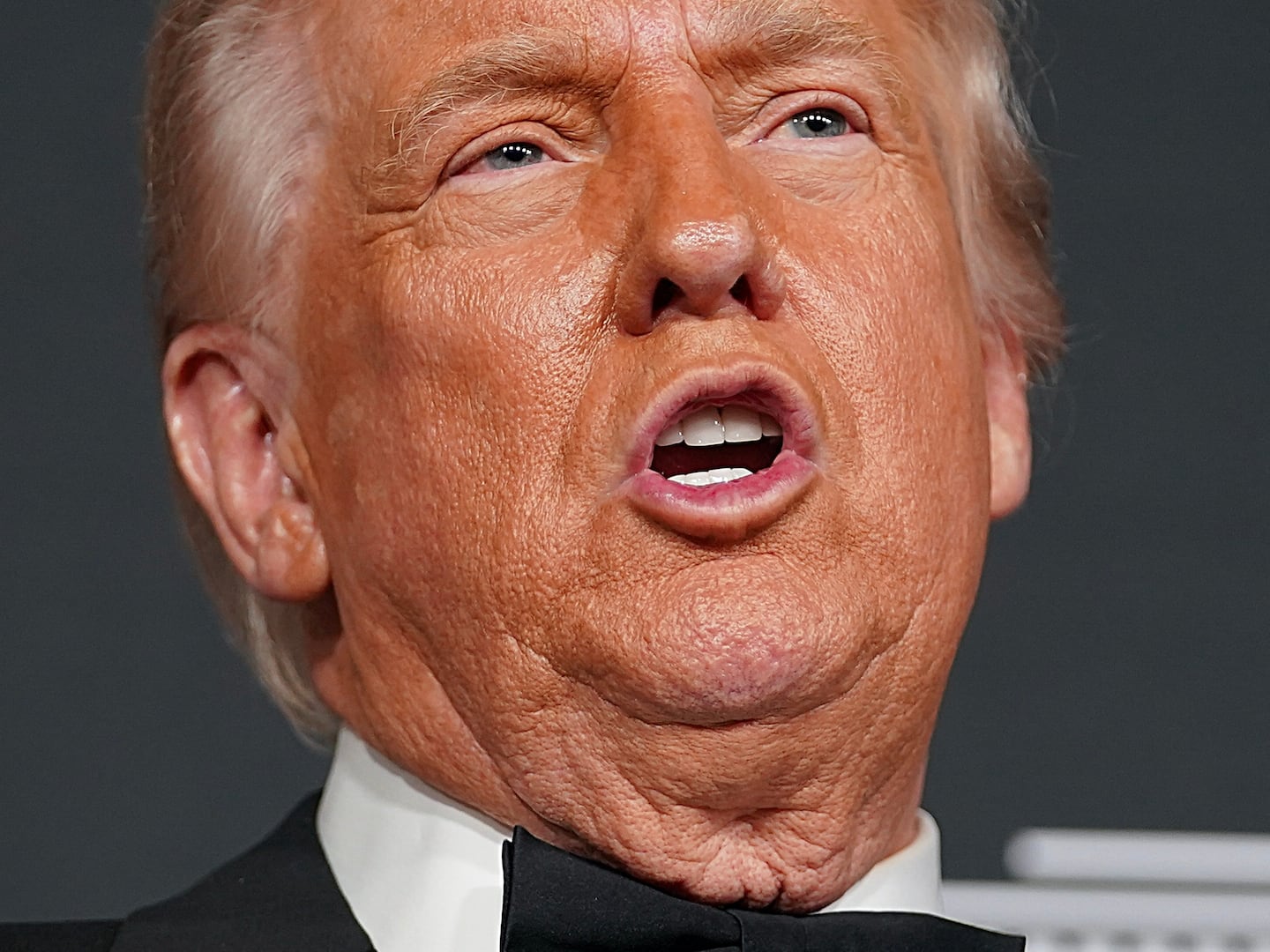
The most surprising thing about Viva Elvis, Cirque du Soleil's latest effort, their seventh permanent Las Vegas show, which opened Friday at CityCenter (the much-marketed $8.5 billion resort of the future), is that this is now the most traditional Vegas production on the Strip. It is a throwback that offers big dance numbers, showgirls galore, and at the end, a stage packed with male and female, short and tall, jump-suited Elvae.
Viva Elvis makes no effort to be anything but entertainment—upbeat, gaudy and over-the-top. And it is old school despite the Cirque-scaled budget—$50 million for the show and $180 million to build the theater—that allows the latest technological magic to bring Elvis onto a screen overlooking the action, while sending his powerhouse voice coursing over the audience.
In Viva Elvis, critic Mike Weatherford sees Las Vegas’ gilded age of entertainment’s final moment. “You look at the Elvis show and the cast and the overhead and you know that nothing like that is going to come along for awhile.”
As separate entities, Presley, more than 40 years ago, and Cirque, more than 15, made it in Vegas as outsiders. Since then, of course, both have become worldwide institutions. Dance heavy and joyously excessive, Viva Elvis is a pat on the back that celebrates itself. From a performance of "Blue Suede Shoes" with a giant blue suede shoe prop slide for acrobats, to a "Viva Las Vegas" number where old-style showgirls in headdresses are arrayed on an extraneous staircase, this show is glorious indulgence—as bejeweled as one of the King's belt buckles.
And Viva Elvis is a victory lap for Cirque; even in this economy Cirque has created an expensive show that is a sure thing.
As in their hugely successful production Love up the Strip at the Mirage, in which the Beatles provide the soundtrack, Cirque is helped here because they picked an easy commercial target in Elvis Presley. Vegas Happens Here blogger and Las Vegas Weekly columnist Steve Friess had mixed reactions to the artistic value of Viva Elvis, but no doubt about the show's commercial future: "It is bright and colorful. It is clearly going to be a hit."
But there are few sure bets in Vegas in 2010. In fact, Elvis, Cirque and Celine Dion, who has announced a return to Caesars Palace starting March 2011, may comprise the entire list. In Vegas, Cirque has never had a show fail. In the middle of a recession that has closed many well-known shows on the Strip—including magician Steve Wyrick's at the Planet Hollywood mall, Follies Bergere after decades at the Tropicana, and Splash and An Evening at La Cage at Riviera—Cirque commercially defies gravity.
On the red carpet Friday for Viva Elvis, which was actually blue in honor of "Blue Suede Shoes," Cirque founder Guy Laliberte shrugged off the recession, and, sounding more like a captain of industry than a former stilt walker, volunteered that Cirque could easily do an eighth Vegas show, or even a ninth. "As long as we are capable of bringing distinctive product, we will be OK," he said.
Despite the presumed success of Viva Elvis, the financial challenges Vegas resorts face—the two largest casino companies on the Strip, Harrah's and MGM-Mirage, both have billions in debt—may mean that this show marks an end (until Celine and her orchestra return next year) to big money productions in Vegas.
The last decade was defined by these sorts of only-in-Vegas expensive shows in custom theaters: the multiplatform, rotating stage of Cirque's KA at MGM Grand; the stadium with the Wolfgang Puck snack bar created to house Celine at Caesars; and the $70 million used to transform a Rem Koolhaas gallery into a theater for Phantom: The Las Vegas Spectacular at the Venetian.
"Looking ahead for entertainment, for a longtime it is going to be doing it cheap," said Mike Weatherford, the entertainment writer and critic for the Las Vegas Review-Journal. "I don't think the casinos are in a position to do anything about that."
In Viva Elvis, he sees Vegas' gilded age of entertainment's final moment. "You look at the Elvis show and the cast and the overhead and you know that nothing like that is going to come along for awhile." (According to press materials, Viva Elvis uses 400 costumes with 14,000 components decorated by 100,000 crystals.)
Viva Elvis is all easy pleasures—beautiful people, lots of choreography, and plenty of flash. This is an Elvis Presley who never did drugs, got divorced, or even gained weight; throughout the show he is the eternal and feral voice of youth. One number acts out young Presley's superhero fantasies with a total literalness. The entire show presents Elvis in such earnest cleanliness that even Colonel Parker emerges from the bath scrubbed clean of sleaze and gambling problems to narrate the tale of the "boy" he recalls with such loving fondness.
Long before Viva Elvis, both Elvis Presley and Cirque made their marks in on Las Vegas as innovators in changing times for the city's entertainment. For Presley's concert comeback in Vegas in 1969, he created a groundbreaking production with himself as headliner rock star. But most important was Presley's decision to pack the stage with a mammoth band, equal to his dramatic, King-sized voice, which included two gospel vocal groups, The Imperials and Sweet Inspirations. Presley's aim was to construct a show in Vegas with the reach and grandeur of all the genres of music that inspired him including gospel, country, and the latest chart hits by the Beatles, including a medley of "Hey Jude" and "Yesterday."
In 1993, Cirque's Mystere threw out traditional Vegas notions of mixing showgirls and novelty acts. The Canadian troupe's first permanent production, in a custom theater at Treasure Island, had a ticket price meant to turn a profit. But Mystere also brought to Vegas something Siegfried & Roy never pondered: aesthetic ambitions that were moody, dark, grand and pretentious. And meant for more than sending people back out to the tables ready to play.
These days, Vegas is in no position to roll the dice with entertainment. But as longtime headliner Carrot Top notes, stagnation also has substantial risks. "Vegas entertainment used to always be changing," he said Friday. "Every year there was a new landscape for entertainment. I used to hope it didn't change too much, because I'd like to keep my job. But right now I don't know what comes next."
According to Weatherford, one thing that will come next are low-cost shows starring a celebrity—like Jason Alexander in Donny Clay at Planet Hollywood, and Chaz Palminteri's A Bronx Tale, which is returning to the Venetian for a second run. "You hope the celebrity will bring the people, and the cost is no more than plugging in a microphone," Weatherford said. Friess agrees, but sees the small budgets as allowing for artistic possibilities shows like Viva Elvis cannot afford to risk. "Shows like A Bronx Tale are emerging as a form of counterprogramming," he said.
Standing near the blue red carpet for Viva Elvis Friday, hoping to catch sight of celebrities, Frellie Campos, 36, from Seattle, wondered whether this might be her last visit to Vegas. For the past decade, along with her partner, she has come to Vegas every other year to see shows. "Not headliners," Campos said. "Headliners come to your town. Shows like Viva Elvis. You want to see shows of quality. We are running out of choices. We have seen everything. For us after this show, if there isn't anything new, there isn't any reason to come back to Vegas."
To keep tourists like Campos happy, without bottomless budgets or Celine Dion, Vegas is now facing an unfamiliar question now that Viva Elvis has opened: What comes next?
Richard Abowitz has chronicled the rise and continuing fall of Las Vegas for over a decade. He is the author of hundreds of articles for Las Vegas Weekly. Abowitz is perhaps best known for writing the Movable Buffet blog and continuing print column for Los Angeles Times. In addition to covering Vegas, Abowitz has been writing about music and culture for Rolling Stone since 1996. In December 2009, Abowitz launched GoldPlatedDoor.com to be an honest broker reporting on all things Vegas.






